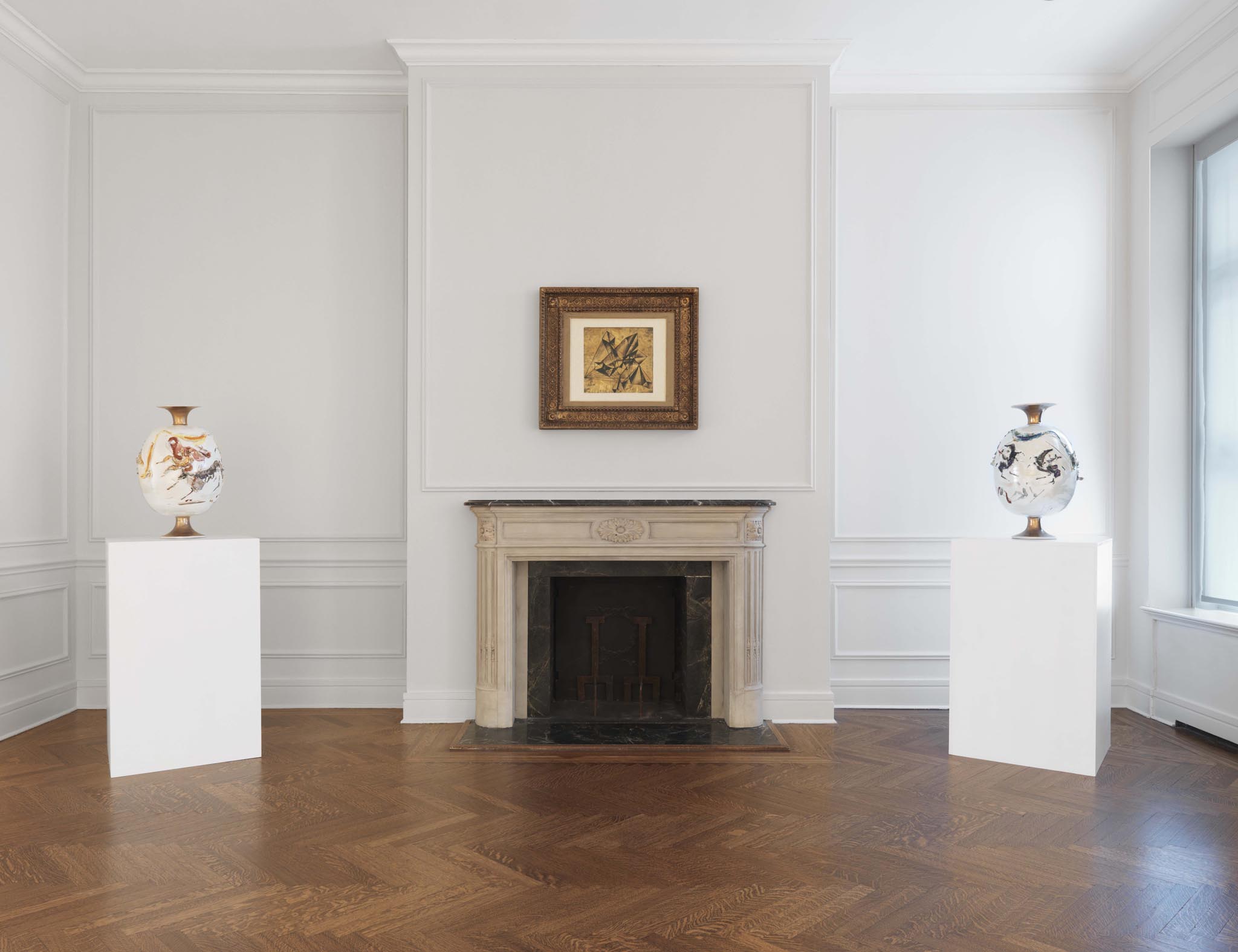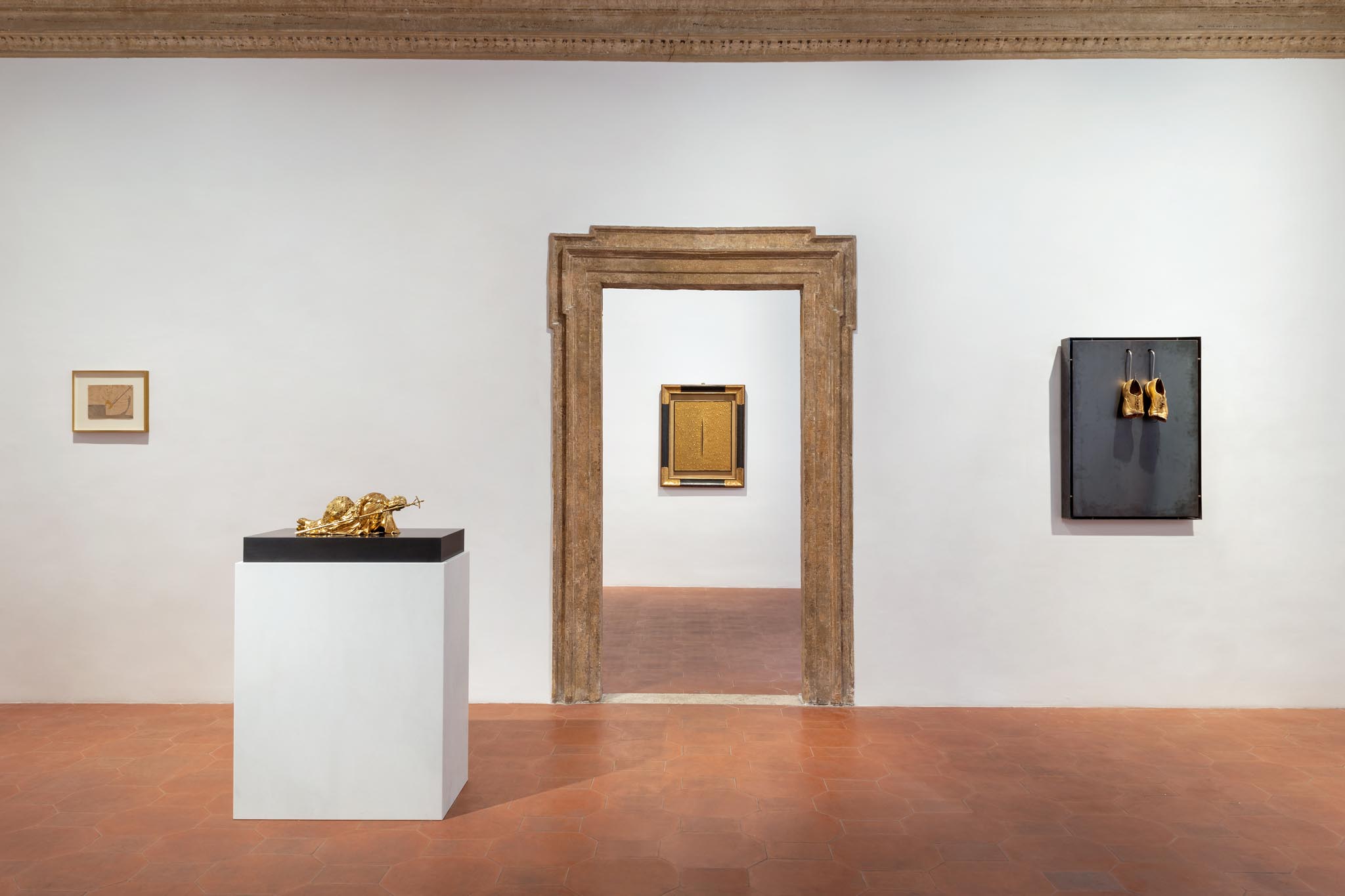Luciano Fabro (Turin, 1936 – Milan, 2007) moved to Milan in 1959, where he lived for the rest of his life. There, he established relationships with some of the most compelling artists active in the city at the time, such as Lucio Fontana, Piero Manzoni, Dadamaino, and Enrico Castellani.
In 1965, he held his first solo exhibition at the Vismara Gallery, presenting works made of glass, mirrors, and metal. Just a few years later, he participated in the seminal exhibition Arte Povera – In Spazio, curated by Germano Celant at La Bertesca Gallery in Genoa. This marked Fabro’s entry into the Arte Povera movement, which he not only joined but also helped establish, participating in all of the group’s subsequent collective exhibitions.
From the outset, and throughout this period, Fabro’s artistic investigation focused on analyzing the linguistic nuances of sculpture. This research involved both traditional materials such as marble and iron, as well as more experimental media like glass and silk. His aim was to unlock the expressive potential of sculpture, freeing it from the constraints of representation and narrative content.
Croce (1965–1986), for example, was developed during these very years. The lengths of its metal segments were proportionate to the dimensions of the space in which it was installed, allowing the work to fully interact with its environment.
In 1968, Fabro began the series Piedi (1968–1972) and Italia. In the latter, he created silhouettes of the Italian peninsula using a variety of materials, often displayed in unconventional orientations, such as upside down. The figure of Italy—an image that is instantly recognizable yet stripped of its symbolic meaning—lent itself to the artist’s intent to make visible “the encumbrance of the object in the vanity of ideology.”
In addition to creating artworks, Fabro also engaged in broader projects. In 1978, he collaborated with Hidetoshi Nagasawa and Iole De Sanna to relaunch the Casa degli Artisti in Milan. Among his notable works from this period is Speculum Italiae (1971), featuring the silhouette of Italy positioned on its side and leaning against a wall, rendered in mirrored crystal.
During the 1970s, Fabro explored new creative directions with projects such as Attaccapanni (di Napoli) (1976–1977). These works originated from an imagined Neapolitan sunset and the colors it exudes, making light the central theme. Comprising five wall-mounted elements, each piece featured a painted cloth draped over a bronze support made using the lost-wax casting technique, evoking abstract forms. The sinuous lines of the bronze structures dictated the fabric’s drape, turning it into a highly tangible, sculptural element that contrasted with the perceived weightlessness of the supports—thus emphasizing the tension between materiality and lightness.
During the 1980s, Fabro focused on the concept of space with the Habitat series. In 1983, he also began teaching at the Brera Academy in Milan.
At the end of the decade, he presented a new work titled Paul Bird 1450–1989 (1989), which references the Renaissance painter Paolo Uccello. The piece evokes a dialogue between absolute order and visionary transgression. The year 1450 refers to Uccello’s frescoes in the Green Cloister of Santa Maria Novella in Florence, where biblical themes such as the Great Flood unfold in unconventional and almost irrational perspective constructions. The year 1989 marks the presentation of Fabro’s work at the Castello di Rivoli in his solo exhibition.
Luciano Fabro passed away in 2007 while preparing for an exhibition at the MADRE Museum in Naples. Nevertheless, the exhibition, titled Didactica magna minima moralia, opened later that same year.
In 2008, his work was exhibited for the first time at the Palazzo delle Esposizioni in Rome during the 15th Quadriennale, where his piece Autunno was featured. Today, Fabro’s works are held in the collections of major national and international museums, including the Centre Georges Pompidou in Paris, the Museo Reina Sofía in Madrid, the Galleria d’Arte Moderna e Contemporanea in Rome, the Museo MADRE in Naples, the Tate Gallery in London, the Museum of Modern Art in New York, and the San Francisco Museum of Modern Art.

